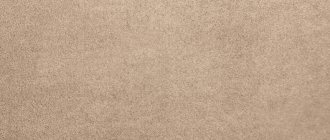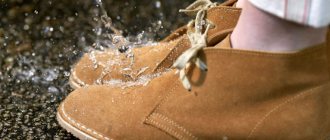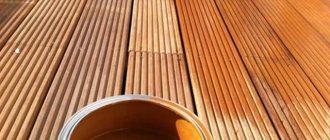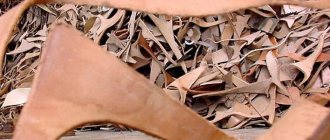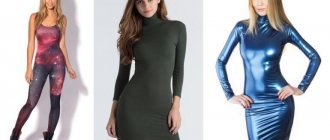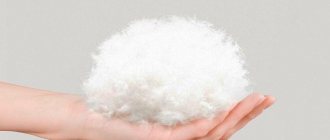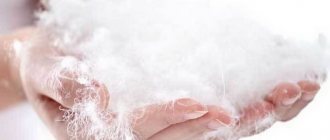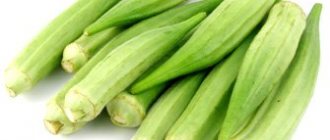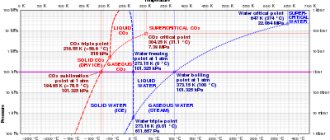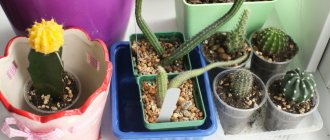The first material for the prototype of human clothing was animal skins. Since then, leather and fur have gone through an evolutionary technological path, but have not lost their relevance in many countries. The use of natural materials for northern peoples is not a tribute to fashion, but a vital necessity.
Due to limited resources and complex processing technology, the material is highly expensive. An alternative option is to create synthetic fabrics that are identical not only in appearance, but also in properties.
Description and composition
Artificial suede, or eco-suede, is a textile fabric that looks like natural suede. But the front surface of the textile has a short velvety pile, identical to its natural counterpart. The wrong side is a woven base or non-woven fabric.
Gallery of faux suede samples
The material is dense, soft, velvety, pleasant to the touch. It holds its shape well and, unlike natural suede, does not absorb moisture. It has high strength and resistance to mechanical stress. Ecosuede is difficult to tear or puncture. Demonstrates the ability to retain heat due to the texture of the fabric. A wide range of colors allows you to create beautiful fashionable items from textiles.
Expert opinion
Alyona
Fabric expert and technologist Alena Khlebnikova is ready to answer your questions.
Write me
Faux suede has elasticity. Resistant to deformation. When stretched, the fabric quickly returns to its original shape.
Woven-based materials use microfiber, which goes through a process of fluffing down to the smallest fibers. Woven fabrics made of cotton or a mixed composition are used as a base. The majority is polyester.
Properties
Modern technologies work wonders: the textile substitute is in many ways not only equal to its natural counterpart, but significantly superior to it.
Properties of suede fabric:
- wear resistance;
- resistance to fading;
- uniform color;
- no defects.
In addition, artificial suede does not accumulate electrostatic charge, does not break, and does not absorb dirt and water. Relatively fire resistant, does not flare up, does not melt from a spark.
Subtleties of production
The technology for producing the material consists of applying polyester fibers to a woven base using special equipment. Bonding of cotton and synthetic components occurs. At the final stage, the material is treated with a special compound to impart water-repellent properties.
The second manufacturing option is to apply the pile using the spraying method. This method allows you to obtain relief prints on the front surface. The base in this case is made from raw materials of chemical origin.
At the final stage, the textiles are polished. Teflon impregnations are used for strength and water resistance.
Among the simplest and most inexpensive production methods, noteworthy is the method of applying crushed viscose fibers using an electrostatic field. A layer of PVC resin is applied to a non-woven base (usually tarpaulin). Then, through exposure to an electrostatic field of high potentials, the villi are glued, which are then leveled. Excess viscose particles are combed out.
The surface is additionally fixed with adhesives, painted and dried. This type of eco-suede is the most affordable. But due to the polyvinyl chloride base, the fabric does not allow air to pass through, which reduces its hygienic properties. This type is used as upholstery and raw material for the manufacture of haberdashery goods, and less commonly for sewing outerwear.
Short pile is most durable
But there are also disadvantages: the fabric, especially light-colored ones, gets dirty quickly and, like a magnet, attracts pet hair, so for long-term use a removable cover is required. Z
- Amshes also suffer from mechanical stress; irreparable damage will be caused by the claws of cats or dogs.
- Regular care and careful handling of products is necessary, and in case of severe contamination, only dry cleaning will save you.
Characteristics table
When buying things made from textiles of a chemical nature, for example, a dress made of artificial suede, it is important to know how the material will behave in use and whether it can provide comfort. To do this, it is worth evaluating not only the description of the fabric, but also its technical characteristics.
| Characteristics | Indicators |
| Raw material type | Synthetic |
| Composition of raw materials | Polyester, microfiber, in non-wovens - viscose, in some types stretch fibers are added (up to 7%) |
| Method of weaving threads | Application of synthetic fibers to the base |
| Water resistance | Average |
| Hygroscopicity,% | 1 — 6 |
| Breathability | Low |
| Vapor permeability | Optimal |
| Electrification | Weak |
| Strength, wear resistance | High |
| Resistance to deformation | Maximum |
| Extensibility | good |
| Wear resistance, Martindale test cycles (non-woven upholstery types) | Not less than 100,000 |
| Density, g/sq. m | 330 — 520 |
| Standard width of canvases, cm. | 145, 150 |
| Side | Right |
| Kinds | Woven, non-woven |
| Color options | Plain, plain-dyed canvases, wide color palette |
| Manufacturer | Korea, Italy, China |
| Standardization | GOST 56625-2015 |
| Price | Affordable, from 600 rubles/linear meter; upholstery – from 1800 rub/meter |
Show all properties
Differences from natural
Even taking into account the maximum resemblance to the original, faux suede still has a number of features. How to distinguish natural suede from its artificial sister?
Pay attention to these details:
- Obtained by tanning animal skin, natural suede looks more natural. It has a heterogeneous porous structure, in which cracks and scratches are noticeable.
- Dyed natural suede cannot be a uniform color (the reason is its uneven texture).
- Natural material varies in thickness from center to edge.
- Original suede smells like leather, while artificial suede smells like synthetics.
- Natural suede is much more expensive than artificial suede.
Advice! Run your hand over the canvas: the natural color at the point of contact will become lighter.
Types of faux suede
Combining the qualities of velor and leather, artificial suede has found wide application. Thanks to the emergence of innovative technologies, new types of textiles are emerging, focused on the production of various products.
Furniture
Fully synthetic eco-suede is used as interior materials. The most striking representative of the line is the Italian-made Alcantara fabric. The material is used for the manufacture of drapes and curtains, and upholstery of upholstered furniture (chairs, sofas). Practical. The soft, stain-resistant fabric demonstrates high strength and durability. The production technology is patented by Alcantara SpA.
For clothes
Gallery of suede clothing products
Several types of this material are used in sewing various products. Suede on scuba - a two-layer fabric on a knitted base is used for the manufacture of thermal underwear, men's and women's clothing.
The piled polyester surface is bonded to a neoprene backing. This fabric is sometimes called diving chamois.
Double-sided knitted fabric is used in the clothing industry to create wardrobe items for children and adults. The textile composition includes elastane threads, which ensures a good fit.
Skirts, dresses of classic styles, raincoats, jackets, bombers, vests, jackets, hats and gloves are sewn from clothing types of fabric. Another popular option is suede with fur backing. An alternative to real fur. The fabric is used to make jackets, sheepskin coats, hats, and mittens.
Shoe
Popular suede shoes
A shoe substitute for natural suede is difficult to distinguish from the original one. Dense material that holds its shape well is used for sewing shoes. Shoes, boots, and boots are made from it. The products are affordable and easy to clean. Unlike its natural counterpart, there are no traces of water or snow left on artificial shoes. Caring for such products is easy. The main rule is that you should not dry near heating appliances; otherwise the adhesive layer will be damaged.
Automotive
To clean the interior and polish the car body, wipes made of perforated velor, a subtype of ecosuede, are used. They ensure that there are no divorces. They are used in car wash salons.
Alcantara fabric is used in the production of seat covers. Artificial suede is also used for upholstery. For the ceiling cladding, foam rubber material is used to provide sound insulation.
Haberdashery
Leather goods have always been highly expensive. An alternative option for the manufacture of this group of products is eco-suede on a non-woven base. The material is used to sew gloves, mittens, bags, backpacks, clutches, purses, belts and belts.
Where was it used?
Substitutes for natural suede are used everywhere, from the music industry (as a backing for wind instruments) to sewing clothes, shoes, covers, curtains and upgrading the interior of any vehicle.
Sewing clothes, bags, shoes, accessories
In order for clothes and shoes made of synthetic suede to be comfortable and not irritate the skin, choose types of fabric with a natural base - cotton or silk, or, as in the case of outerwear, put suede on the lining. For dresses and suits there is a wide range of suede knitwear.
Artificial suede with good water-repellent impregnation successfully combines all the properties necessary for high-quality sports shoes. The relative ease of care and affordable price make it an ideal solution for dress shoes, which are usually changed every season, following the latest fashion trends.
Accessories - bags, backpacks, wallets, belts - are usually made from PVC-based substitutes, this extends their service life and also makes them more resistant to environmental influences.
Furniture upholstery
The best faux suede for furniture is a microfiber-based material. Such covers are easy to care for, easy to wash and dry, but they are also stronger and more wear-resistant.
Furniture covered with suede should be vacuumed regularly and cleaned with dry salt and a soft brush. It is advisable to purchase brushes with special attachments in the form of a rubber eraser or roller.
Vehicle interior
In a vehicle, seat covers are usually subject to greater risks of wear and tear than furniture at home, so faux suede for cars should not be too finicky to clean and care for.
It is advisable to carry a special restorative agent and a rubber brush with you in the salon to remove the problem immediately and prevent it from becoming old. Periodically, the car interior needs to be cleaned either at home with a steamer or in a special service, since suede absorbs odors.
Advantages and disadvantages
The advantages of eco-suede include the following qualities:
- Spectacular appearance.
- Acceptable price.
- Durable with proper care.
- Soft and high density.
- Ability to repel water and dirt.
- Easy to clean.
- Wide selection of colors.
- Ability to retain heat.
- Form stability.
In addition to the advantages, textiles have minor disadvantages. The disadvantages include the following properties:
- Eco-suede upholstery is not resistant to pet claws.
- Some species exhibit low air exchange.
- Needs regular care.
- Only dry cleaning can deal with stubborn stains on the surface.
Weak side of ecosuede
Ecosuede has an attractive appearance and a lot of other advantages, but here we can highlight some disadvantages:
- insufficient heat exchange. Natural fabric can “breathe”, but clothes or shoes made of artificial fabric can be very hot in the summer;
- the material does not tolerate high humidity;
- need for special care. It is better to wash such items by hand, using neutral detergents. However, this also applies to products made from natural linen.
Manufacturing technologies are constantly being improved, so ecosuede definitely deserves attention, despite some shortcomings.
Product care
The material does not get dirty for a long time. However, the time will come when it will have to be cleaned. The choice of care method depends on the type of eco-suede and the type of product:
- Dry professional cleaning is best for clothing. Despite the fact that some users share their impressions of methods for safe washing, in our opinion, this should not be done.
- Upholstery fabric can be easily cleaned with a regular brush. You can apply foam from special detergents to a sponge and clean the furniture surfaces with it. There is no need to be particularly zealous. Ecosuede cleans easily and quickly. There is no need to get carried away with water treatment. The material does not absorb water, but reflections on the surface may remain.
The correct choice of material and method of caring for it will allow you to enjoy eco-suede products for a long time.
Source
Dry cleaning
Following all the rules and recommendations, you can wash the following at home:
- any accessories,
- dresses,
- skirts,
- trousers.
It is better to dry-clean jackets, outerwear, and hats. It is very difficult to remove stains or dirt from them on your own.
There is a high probability of product deformation. In addition, it is almost impossible to properly dry and steam a suede coat at home .
The cost of dry cleaning will start from 500 rubles and can reach 2-3 thousand rubles.
Rules for washing suede items in an automatic machine
Of course, when purchasing an item, you don’t want to spend a lot of time on care. Hand washing is a labor-intensive and energy-consuming process; it is much easier to throw a dirty item into the “washing machine” and take it out fresh and clean. Delicate materials such as suede require special attention. To wash fabric in the “automatic” mode you need:
- place the item of clothing in a special protective bag;
- pour the gentle agent into the dispenser;
- stop using conditioner, stain remover and rinse aid;
- select the “delicate” or “hand wash” mode;
- set the minimum number of drum revolutions;
- refuse spinning.
The washing cycle should be short. It is not recommended to set the timer for more than 30 minutes. You should not choose “intensive wash” or “extra rinse”. The water temperature should not exceed 40 degrees. 20-25 degrees is considered optimal.
